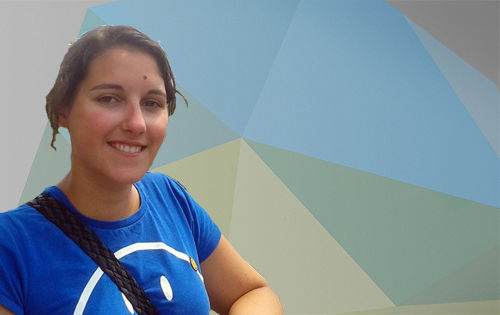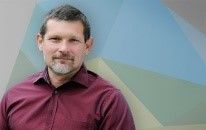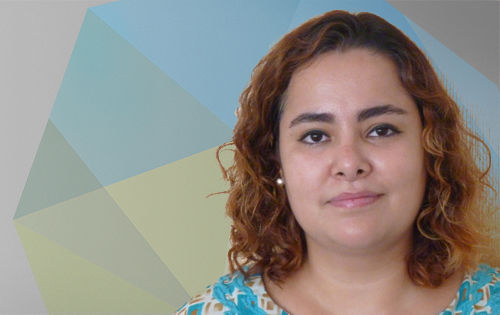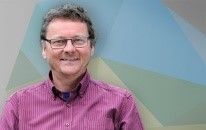BODIUM
bodium logo

BODIUM is a systemic soil model that simulates the complex correlations between soil properties, climatic conditions, soil management and their interactions in the soil at the individual site. All relevant physical, chemical and biological processes and their interactions are taken into account in the model. The model is the basis for BODIUM4Farmers. As a tool for agricultural practice, it is intended to support arable farms in balancing good yields and healthy soils in the long term.
Systematic modeling of soil functions
Soils are complex systems in which a large number of physical, chemical and biological processes interact at different spatial scales. The various soil functions result from these interactions. Models for describing the dynamics of soil functions in response to management measures or climatic changes need to represent the relevant soil processes and their interactions. In BonaRes, we are developing a systemic model approach in which biotic and abiotic processes in soils are linked with each other via mathematical process descriptions in accordance with our current state of knowledge.
Thus, a network of interactions is created that reproduces the complex behavior of the soil as realistically as possible. This includes the non-linear dynamics of soil properties, their convergence towards stable states but also their instability in response to external disturbances.
netz_engl

This modeling approach is a useful tool in several aspects:
1. It allows the prediction of the effects of agricultural practices on soil functions.
2. The need for current research to improve our understanding of the system can be identified more effectively.
3. The relevance of individual processes for the overall system can be assessed.
More information on the model
BODIUM is designed to simulate the complex relationships between soil properties, climatic conditions, soil management and their interactions in the soil. The concept and claim of BODIUM is to represent the soil as an overall system with all relevant physical, chemical and biological processes and their interrelationships. On this basis, it will be possible to simulate changes in soil functions in response to changing boundary conditions (management and climate). The BODIUM model is based on proven model concepts for plant growth as well as water and material flows in soils and supplements these with additional aspects that are essential for soil functions but have hardly been taken into account so far. One example is the temporal dynamics of the soil structure due to soil cultivation or biological activity, which are of decisive importance for the water balance, the carbon balance and root growth. Another example is the differentiation of various groups of soil organisms, their specific demands on food quality and their influence on turnover processes, structure formation and mixing in soils.
The BODIUM model runs without complex calibration of the individual model parameters for the respective site. The parameterization of the soil processes is based on our current understanding of systemic processes. This means that the model can be used for different locations and can also simulate management or climate scenarios for which there is still little or no empirical data. The discrepancy between measured and modelled variables (e.g. yields, Nmin values, water contents) are not minimized by calibration, but rather indicate missing or insufficiently modelled processes and thus help to gradually improve the model. The primary aim of BODIUM is not to predict the coming harvest as accurately as possible, which could be achieved by calibration using current state variables, but to predict the medium to long-term changes in soil functions, which can only be achieved using a process-based model.
In order to obtain reliable results, we first need to know the processes in the soil - because we can't convert into program code what we don't understand. To do so, we use new findings from the BonaRes joint projects. On this scientific basis, we can improve and expand known model approaches and process descriptions. For example, we integrated the influence of tillage on the pore structure and the subsequent settlement of the soil into the BODIUM model as a "dynamic soil structure". In addition to the influence of cultivation on the soil pores, the various processes depending on the pore structure can also be modeled. The description of complicated biological processes is also improved with BODIUM. This includes, among other things, how microbial communities control the nutrient cycle in the soil. Using new methods, for example from microbiology, the process knowledge in this area is constantly growing and we are integrating it into BODIUM. The model can thus be constantly adapted and improved according to scientific progress.
A critical question is: how do we know that the model delivers reliable results? These results are based on the mathematical description of many physical, chemical and biological processes. Some of the relevant parameters are very difficult to measure directly or can only be accessed via highly simplified laboratory experiments. Nevertheless, in order to be able to assess the quality of the model predictions, we use existing data from long-term experiments. Here, the essential boundary conditions of soil management, climate and weather are known in detail and important state variables such as nutrient content, carbon stocks or harvest quantities are continuously measured. These state variables are the result of the processes depicted in the model and their interactions. The robustness of the results and the plausibility of the model assumptions are then determined by how well the dynamics of these state variables are represented by the model (without calibration).
Contact
Publications

Sara König (UFZ)
email: sara.koenig@ufz.de
Tel: +49(0)341 6025 2347

Ulrich Weller (UFZ)
email: ulrich.weller@ufz.de
Tel: +49(0)341 6025 4410
BODIUM team
The BODIUM model depicts the soil as a system with all relevant physical, chemical and biological processes and their interrelationships. Therefore, interdisciplinary collaboration between different scientists is particularly important for its development.
Biogeochemical processes
The availability of nutrients in the soil depends largely on the soil texture and the organic matter (humus) that builds up as a result of dying roots and organic fertilizers. Bacteria and fungi live either in competition or in symbiosis with the plant roots and are the main drivers of humus dynamics in BODIUM. These processes release nutrients for plant growth but also produce CO2 and N2O emissions.
just

platzhalter profil


lukas

Just C., Armbruster M., Barkusky D., Baumecker M., Diepolder M., Döring T., Heigl L., Honermeier B., Jate M., Merbach I., Rusch C., Schubert D., Schulz F., Schweitzer K., Seidel S., Sommer M., Spiegel H., Thumm U., Urbatzka P., Zimmer J., Kögel-Knabner I., Wiesmeier M. (2023). Soil organic carbon sequestration in agricultural long-term field experiments as derived from particulate and mineral-associated organic matter. Geoderma, 434(), 116472. DOI:10.1016/j.geoderma.2023.116472
Just C., Poeplau C., Don A., van Wesemael B., Kögel-Knabner I., Wiesmeier M. (2021). A Simple Approach to Isolate Slow and Fast Cycling Organic Carbon Fractions in Central European Soils—Importance of Dispersion Method. Frontiers in Soil Science, 1(), . DOI:10.3389/fsoil.2021.692583
König S., Vogel H., Harms H., Worrich A. (2020). Physical, Chemical and Biological Effects on Soil Bacterial Dynamics in Microscale Models. Frontiers in Ecology and Evolution, 8(), . DOI:10.3389/fevo.2020.00053
Wiesmeier M., Urbanski L., Hobley E., Lang B., von Lützow M., Marin-Spiotta E., van Wesemael B., Rabot E., Ließ M., Garcia-Franco N., Wollschläger U., Vogel H., Kögel-Knabner I. (2019). Soil organic carbon storage as a key function of soils - A review of drivers and indicators at various scales. Geoderma, 333(), 149-162. DOI:10.1016/j.geoderma.2018.07.026
Soil biodiversity
Many processes in the soil are driven by biology: Earthworms loosen the soil and feed it with organic matter. Microorganisms metabolize this organic matter, make nutrients available and utilize unused nutrients and pollutants. Plants influence the soil through their root growth, as well as by absorbing water and nutrients. In order to simulate soil functions such as carbon storage, nutrient cycling or water filtration and balance under changing conditions, these processes must be integrated into systemic models such as BODIUM.
gabriel salako

andre zaytsev


Bibiana Betancur Corredor (Senkenberg)
email: bibiana.betancurcorre
dor@ senckenberg.de
Tel: +49 (0) 35814760-5592
Lang, B., Betancur-Corredor, B., and Russell, D. J. (2023). Soil mineral nitrogen content is increased by soil mesofauna and nematodes–a meta-analysis. Soil Organisms, 95(2), 117-128. DOI:10.25674/so95iss2id310
Salako, G., Russell, D.J., Stucke, A., Eberhardt, E. (2023). Assessment of multiple model algorithms to predict earthworm geographic distribution range and biodiversity in Germany: implications for soil‑monitoring and species‑conservation needs. Biodiversity and Conservation 32, 2365–2394 DOI:10.1007/s10531-023-02608-9
Lang, B., Betancur-Corredor, B., and Russell, D. J. (2023). Earthworms increase mineral soil nitrogen content–a meta-analysis. Soil Organisms, 95(1), 1-16. DOI:10.25674/so95iss1id308
Betancur-Corredor B., Lang B., Russell D. (2022). Organic nitrogen fertilization benefits selected soil fauna in global agroecosystems. Biology and Fertility of Soils, (), . DOI:10.1007/s00374-022-01677-2
Betancur‐Corredor B., Lang B., Russell D. (2022). Reducing tillage intensity benefits the soil micro‐ and mesofauna in a global meta‐analysis. European Journal of Soil Science, 73(6), . DOI:10.1111/ejss.13321
Soil structure
The soil structure has an influence on the water and gas balance, root growth and biological turnover. It is influenced by biological processes, soil tillage and physical processes. The structure is not static, as is assumed in many soil physics models. It changes over the years depending on management and can also show changes within a year. BODIUM integrates the dynamic structure and can therefore map the effects of different soil management practices.

oliverheller


Vogel H., Wollschläger U., Helming K., Heinrich U., Willms M., Wiesmeier M., Russell D., Franko U. (2019). Assessment of Soil Functions Affected by Soil Management. , (), . DOI:10.1007/978-3-319-96229-0_13
Rabot E., Wiesmeier M., Schlüter S., Vogel H. (2018). Soil structure as an indicator of soil functions: A review. Geoderma, 314(), 122-137. DOI:10.1016/j.geoderma.2017.11.009
Regionalization
The regionalization of soil information in Germany is an important element of the BODIUM model. The properties of soils and thus their functions can differ greatly from site to site. High-resolution, site-specific soil information is required in order to apply the BODIUM model throughout Germany. Therefore, data science approaches for the identification of spatial patterns and the designation of soil functional process units were developed. Each of these spatial units contains information regarding the soil properties that are necessary as input parameters for the BODIUM model. In addition, an informative approach based on the soil overview map of Germany BÜK200 will be developed.
Ließ, M. (2022). Modeling the Agricultural Soil Landscape of Germany—A Data Science Approach Involving Spatially Allocated Functional Soil Process Units. Agriculture, 12(11), 1784.
Ließ, Mareike (2022). 3D soil parameter space of the agricultural landscape [Germany, Version 2], Dataset, BonaRes Repository,
DOI: 10.20387/bonares-13qm-mw25Copy
Application
Science
bodium logo

The basis for the application in practical use is the scientifically developed BODIUM model, which is designed to be updated continuously and adapted to new findings. The source code of the first version is freely available.
Agriculture
logob4f

BODIUM4Farmers is based on the systemic soil model BODIUM. The open access model tool with an intuitive user interface is designed to support farms in balancing their long-term farm management with good yields and healthy soils.


